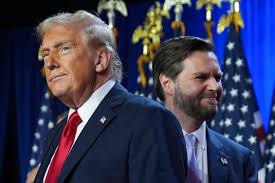
In a stunning turn of events, former President Donald Trump has clinched the presidency for a second term, surpassing the crucial 270 electoral votes needed for victory, even before the final tallies from all seven pivotal swing states have been counted. With key wins in Georgia and Pennsylvania, Trump’s path to the White House has solidified early in the election cycle, sending shockwaves through political circles nationwide.
As of last night, Trump had amassed a total of 274 electoral votes, driven by his strong support among rural and suburban voters, as well as a significant turnout in battleground states. His campaign’s focus on economic recovery, border security, and law and order resonated deeply with voters who prioritized these issues in the wake of ongoing national challenges.
Georgia, a state that had leaned Democratic in the previous election, flipped in his favor, marking a critical victory that many analysts deemed essential for his electoral strategy. With a robust ground game and targeted messaging, Trump’s campaign effectively mobilized support in traditionally Democratic strongholds, particularly among working-class voters disillusioned by the current administration’s policies.
Pennsylvania’s results further bolstered Trump’s electoral count. Known for its diverse electorate, the state has often been a focal point in presidential elections, and Trump’s appeal to blue-collar workers played a pivotal role in his success. His promises to revitalize manufacturing jobs and bolster the economy struck a chord, leading to a decisive win in this key battleground.
While Trump celebrates this early victory, the remaining swing states, including Arizona, Wisconsin, and Michigan, still have votes left to be counted. However, his campaign is buoyed by the momentum of these early victories, suggesting a significant shift in voter sentiment compared to previous elections.
In his victory speech, Trump emphasized unity and a return to American greatness, promising to work for all citizens, regardless of their political affiliation. “We are building a nation that works for everyone,” he declared, rallying supporters who have remained loyal throughout his tumultuous first term.
Opponents of Trump, however, are already raising concerns about the implications of his return to power, citing fears over divisive rhetoric and policies. As the nation braces for the final election results to be tallied, the political landscape is set for a contentious period ahead, with Trump’s presidency likely to spark intense debate and fervent activism on both sides of the aisle.
As the dust settles, one thing is clear: Donald Trump has made a significant comeback, reshaping the electoral map and leaving an indelible mark on the future of American politics.




